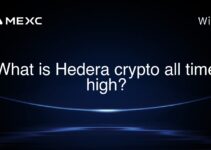Web3, the decentralized web, promises enhanced security compared to traditional web technologies, but it is not without its vulnerabilities. As of 2025, the security of Web3 is a complex issue, influenced by the technology’s decentralized nature, reliance on blockchain, and the use of smart contracts. While these features provide significant security benefits, they also introduce unique challenges and risks.
Importance of Security in Web3 for Investors, Traders, and Users
Security in Web3 is paramount for several reasons, particularly for investors, traders, and everyday users. First, the financial implications are significant. Web3 platforms often handle substantial amounts of cryptocurrency and digital assets, making them prime targets for cyberattacks. For investors and traders, the assurance of robust security means safeguarding their investments from theft and manipulation. Secondly, Web3 applications promise greater user autonomy and privacy, but these benefits can only be fully realized through stringent security measures that protect against unauthorized access and data breaches.
Security Features and Vulnerabilities in Web3
Decentralization and Blockchain
One of the foundational aspects of Web3 is its decentralized nature, primarily enabled by blockchain technology. This decentralization eliminates single points of failure, making Web3 platforms inherently more resistant to attacks that typically exploit centralized architectures. For instance, a distributed ledger technology ensures that data is not stored in a single location but across multiple nodes, making it exceedingly difficult for cyber attackers to compromise data integrity.
Smart Contracts
Smart contracts automate transactions and enforce agreements without the need for intermediaries. However, they are only as secure as the code they are written with. In 2025, several high-profile smart contract vulnerabilities have led to significant financial losses. For example, flaws in smart contract design have been exploited to siphon funds from DeFi platforms, highlighting the critical need for rigorous security audits and improvements in smart contract development practices.
Emerging Technologies and Protocols
As Web3 evolves, new technologies and protocols are continually being developed to enhance security. For example, zero-knowledge proofs (ZKPs) are used to enable transactional privacy while maintaining the integrity of the blockchain. In addition, multi-party computation (MPC) protocols are improving the security of cryptographic keys by distributing the key generation and transaction signing processes across multiple parties.
Updated 2025 Insights and Applications in Web3 Security
By 2025, Web3 has seen widespread adoption across various sectors, including finance, healthcare, and supply chain management. In finance, decentralized exchanges (DEXs) and decentralized finance (DeFi) platforms have become particularly prominent. These platforms leverage blockchain technology to offer services such as lending, borrowing, and trading without traditional financial intermediaries. For instance, platforms like MEXC have integrated Web3 technologies to provide enhanced security features, ensuring safer transactions and user data protection in their crypto exchange services.
In healthcare, Web3 applications are being used to secure medical records and ensure patient privacy through encrypted data and blockchain-based consent management systems. In supply chain management, blockchain is utilized to create transparent and tamper-proof systems for tracking product provenance and authenticity.
Relevant Data and Statistics
According to a 2025 report by Cybersecurity Ventures, blockchain-related cybercrime has seen a reduction of approximately 20% since the widespread adoption of advanced cryptographic techniques like ZKPs and MPC in Web3 platforms. Furthermore, a survey conducted by the Blockchain Transparency Institute reveals that 85% of users feel more secure conducting transactions on decentralized platforms compared to traditional online platforms.
Conclusion and Key Takeaways
While Web3 offers enhanced security through decentralization, blockchain technology, and smart contracts, it is not immune to risks. The complexity of smart contracts and the emerging nature of the technology often introduce vulnerabilities that can be exploited. However, ongoing advancements in cryptographic techniques and security protocols continue to strengthen the security posture of Web3 platforms.
For investors, traders, and users, understanding the security mechanisms at play in Web3 and staying informed about the latest security developments is crucial. Platforms like MEXC, which prioritize security and adopt the latest Web3 technologies, provide a safer environment for engaging with digital assets. Ultimately, the future of Web3 security looks promising as the technology matures and new solutions to counteract vulnerabilities are developed.
Key takeaways include the importance of decentralized security benefits, the need for continuous improvement in smart contract development, and the role of new technologies in enhancing Web3 security. Staying vigilant and proactive in cybersecurity practices remains essential for all stakeholders in the Web3 ecosystem.
DISCLAIMER
Article(s) displayed above is/are generated by artificial intelligence (AI) and may not be manually reviewed by a member of the MEXC team before it is published. The content displayed above does not represent the views of MEXC or its affiliates. Similarly, MEXC does not endorse the accuracy or truthfulness of the above data. Under no circumstance should reliance be placed on the above information. You are recommended to consult a professional, independent advisor where necessary.



